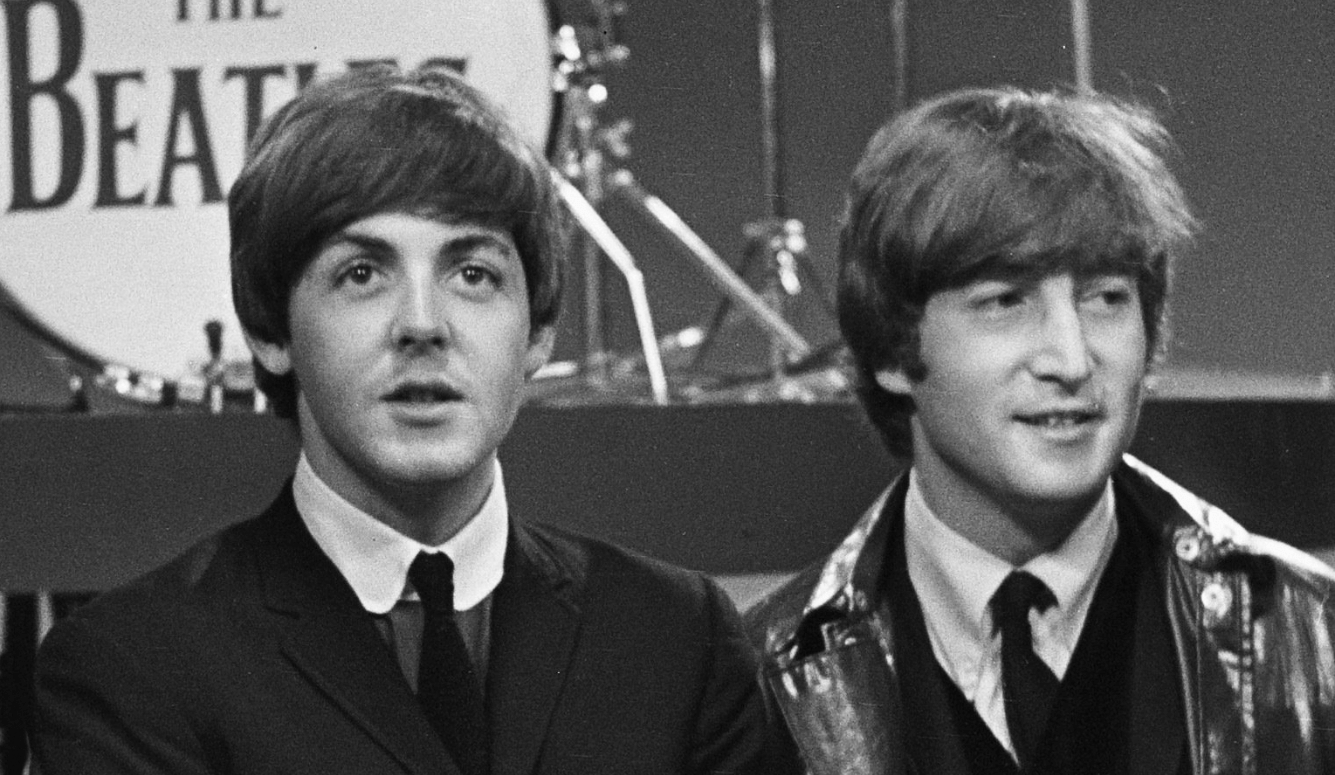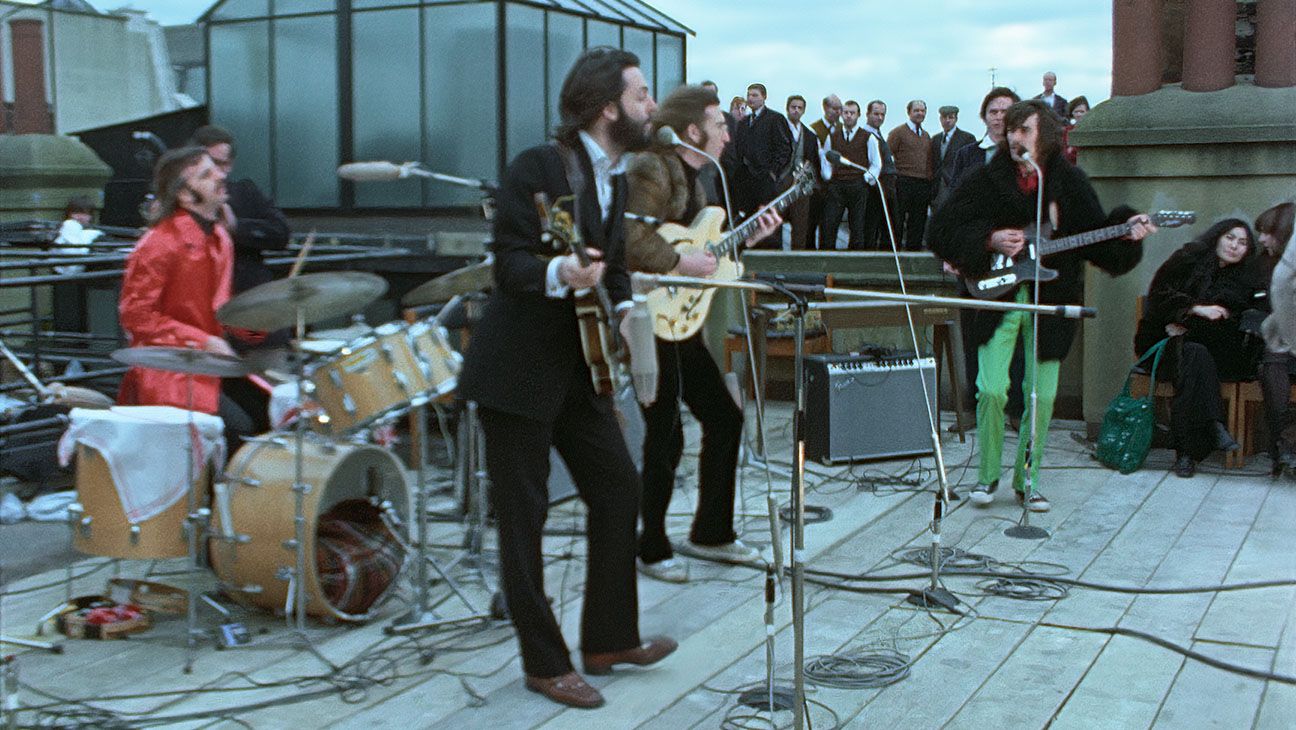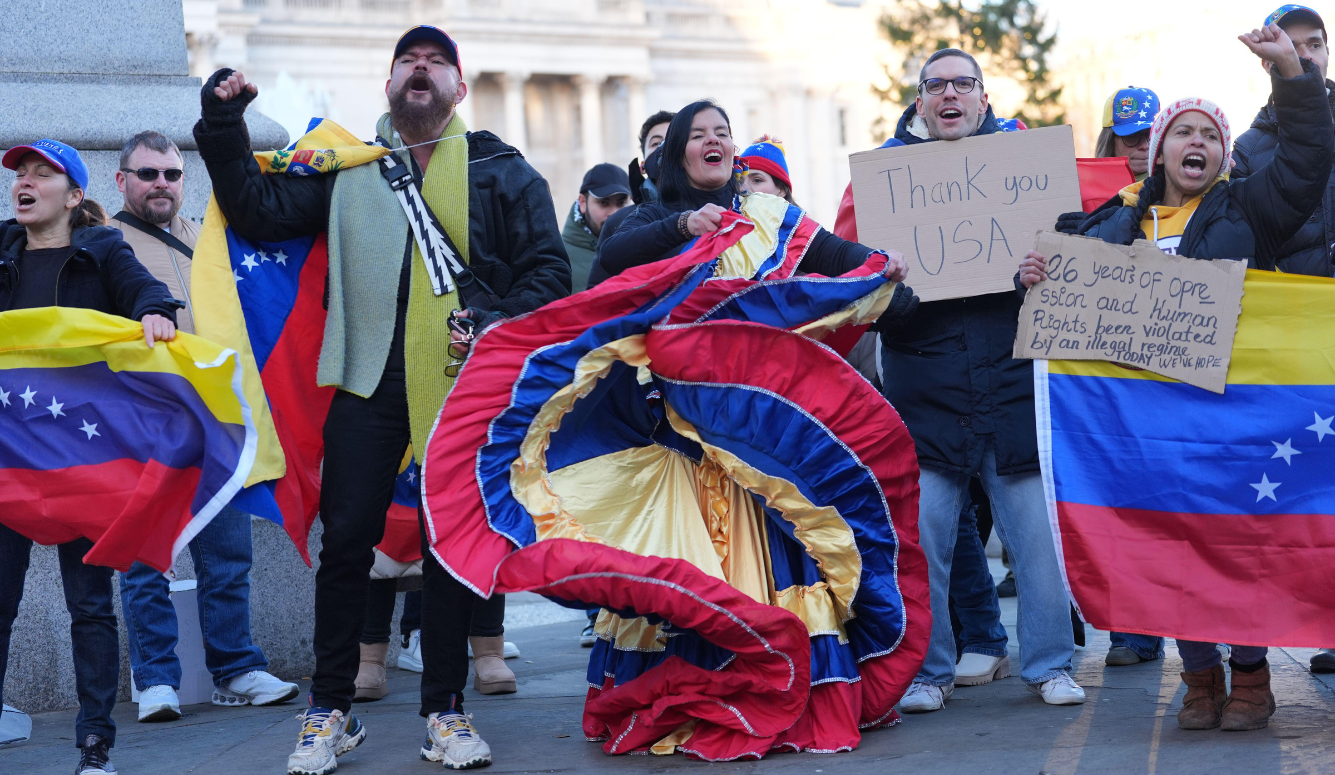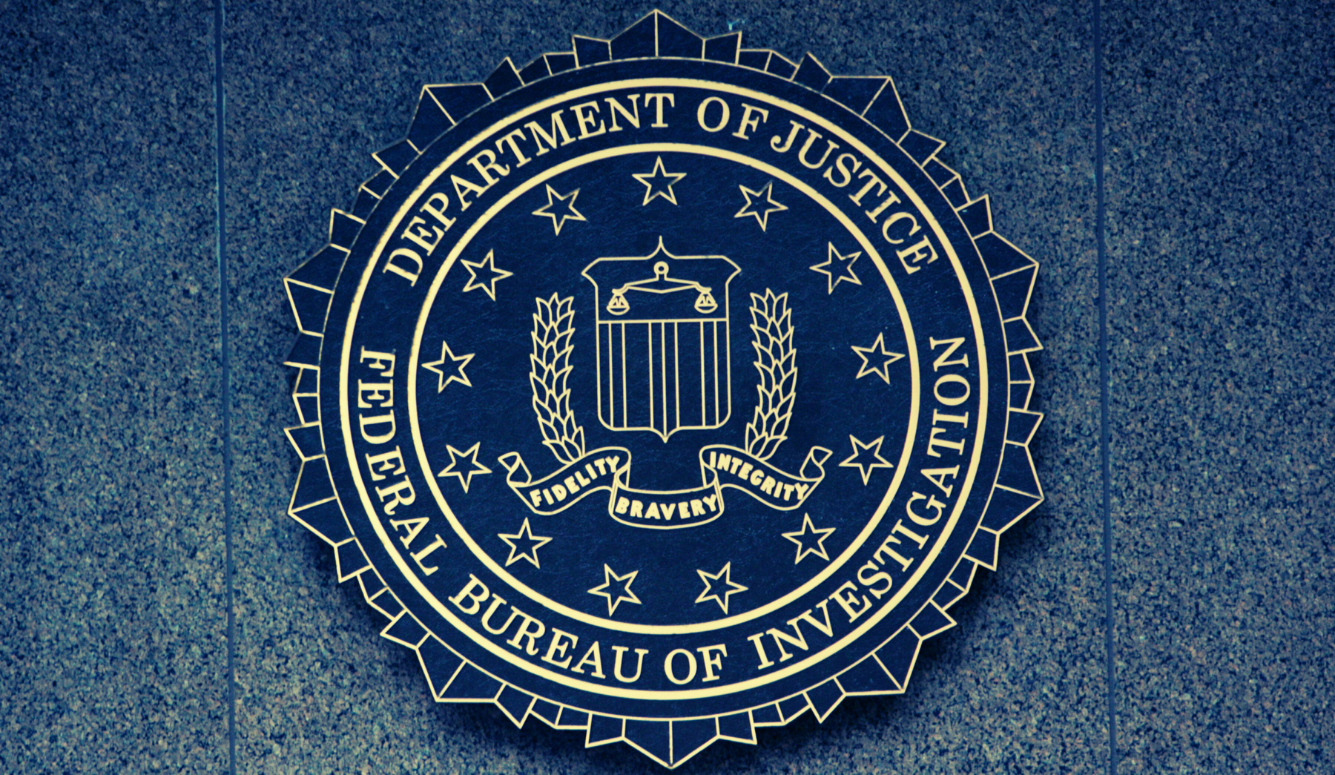Art and Culture
It’s All Too Much
The Beatles phenomenon is being mined for more meaning than the people at its centre ever intended to convey.

A review of John & Paul: A Love Story in Songs by Ian Leslie, 432 pages, Faber & Faber (March 2025)
For a four-piece rock ‘n’ roll outfit that formed in provincial England in 1960 and disbanded just ten years later, the Beatles have had a remarkable afterlife. Their records and performances have been repackaged innumerable times, most recently in Peter Jackson’s 2021 miniseries Get Back and Disney’s 2024 film about the band’s first American tour. They have been the subject of countless documentaries and multiple dramatised films, including Backbeat, Nowhere Boy, Midas Man, Yesterday, and a planned tetralogy of biopics scheduled for 2028. Their songs have been adapted into a Cirque de Soleil show and an edition of the Rock Band video game. And their likenesses have been retailed on a veritable shopping mall of clothes, posters, cards, and collectibles, as well as on stamps issued by the UK’s Royal Mail. It’s now possible to say that the Beatles have been almost literally done to death, since two of the group suffered murderous attacks by deranged fans (John Lennon was shot and killed in 1980, and George Harrison was recovering from a 1999 knife assault when he succumbed to cancer in 2001).
The foregoing litany of products doesn’t even include the vast library of published works about the Beatles, a trove now so voluminous that even books about the books have been written. Beatles scholarship, complete with assigned reading lists and competing critical schools, is a real thing. The latest entry in this ever-expanding catalogue is Ian Leslie’s John & Paul: A Love Story in Songs, which analyses the relationship between the band’s chief composers through key Beatles and post-Beatles tracks like “Please Please Me,” “Eleanor Rigby,” “I Am the Walrus,” “How Do You Sleep,” “Let Me Roll It,” and enough other titles to fill an awesome triple album. Leslie has a good ear for music, and offers fresh, often moving assessments of anthems like “Hey Jude”: “What started so modestly, one human addressing another, culminates in this massed glory,” he writes.
Yet there is increasingly a sense, in John & Paul and elsewhere, that the Beatles phenomenon is being mined for more meaning than the people at its centre ever intended to convey. Of course, plenty of other subjects—from World War II and the Ming Dynasty to Ludwig van Beethoven and Alexander the Great—continue to be re-evaluated for contemporary readerships long after they’ve passed into history. And if any entertainment act merits ongoing study despite being formally inactive for over five decades, it’s John, Paul, George, and Ringo. Next to them, even political leaders from the period, like British Prime Minister Harold Wilson or Latin American revolutionary Che Guevara, seem less influential.
The problem is that books like John & Paul blur the line between biography and fandom. Drawing almost entirely on published secondary sources—previous interviews, press coverage, insider gossip, and hours of recorded songs and performances—Leslie’s book is as much the armchair interpretation of a devoted Beatlemaniac as it is a project of serious psychosocial research. This is an inevitable hazard of covering professional entertainers, whose public output is openly cross-referenced with their private lives, and whose careers are by definition meant to be publicised—and no one’s careers were more publicised than those of the Beatles.
As a result, despite Leslie’s sensitivity towards Lennon and McCartney as individuals, John & Paul sometimes reads like historiography, as the author gathers well-known and obscure nuggets of information about the Beatles narrative and then selects the quotations and anecdotes he finds most compelling. In various passages, he acknowledges that what he’s describing is already “infamous” or has been “famously” described before. It’s a fun ride for the hardcore Beatles community, who’ll appreciate the inclusion of details they will no doubt recognise from other texts. But whether or not this particular perspective will find a place in the canon of Beatles literature is less assured.

After the Beatles’ breakup, Lennon was reflexively portrayed as the quartet’s tortured social and artistic conscience, with McCartney relegated to little more than a lightweight pop balladeer. This image was further embellished by Lennon’s 1980 martyrdom and the appearance of Philip Norman’s 1981 biography Shout! The Beatles in Their Generation, a well-written but biased account that credited Lennon with most of the band’s originality and largely dismissed McCartney as a pretentious arriviste. But in 1994, Ian MacDonald’s Revolution in the Head: The Beatles’ Records and the Sixties went deep inside the musical nuts and bolts of the foursome’s product and concluded that it was really McCartney who was the genius innovator, whereas Lennon’s more limited creative skills were disguised by his outsized personality.
Ian Leslie reinforces MacDonald’s view today, suggesting that Lennon was, if anything, intimidated by McCartney’s superior talent, and conceded his vulnerability in songs like “In My Life,” “Yer Blues,” and his solo track “Jealous Guy.” Like MacDonald, John & Paul also emphasises Lennon’s heavy LSD ingestion in the mid-1960s, which produced psychedelic classics like “Tomorrow Never Knows” and “A Day In the Life,” but at some cost to the musician’s psychic health and discipline. “When John wasn’t working, he was tripping,” Leslie tells us. “Left to drift aimlessly, he might lose himself altogether.”
The newest spin Leslie puts on the Lennon-McCartney legend is in his scattered references to John’s supposed physical attraction to Paul. Lennon was known to have an adventurous appetite for a lot of things, and there has long been speculation about a brief intimacy he may have shared with the Beatles’ gay manager Brian Epstein (naturally, this speculation has been developed into a film, 1991’s The Hours and Times). Yet an LGBT Beatles angle—based on pretty thin evidence scavenged from reams of interview transcripts and personal dirt on two male rock stars who took full advantage of their popularity with women—may just be a trend-chasing claim for the band’s permanent “relevance,” in the same way that fashionable dramatists stage all-black or modern-dress updates of Shakespeare. No doubt, future authors will argue that Beatles were actually pioneers of climate activism, the manosphere, or polyamory. In 2025, John & Paul may stand as the definitive Beatle exegesis—until someone else comes along to posit an entirely different take on the same familiar story.
Continued bids to reinvent the Beatles for yet another generation reflect how much the band has already been recycled critically, politically, and above all technologically. First issued on vinyl records made with analogue equipment, then broadcast on radio and performed in concert and on network television, the music and shows can now be found streaming on Spotify, TikTok, and YouTube, after passing through every available media format since 1962. The 2023 release “Now and Then” used Artificial Intelligence to mix Lennon’s and Harrison’s voices from the 1970s and 1990s with McCartney’s and Ringo Starr’s latter-day input to generate a final “official” Beatles single, about which the New York Times’ Peter Baker commented, “This path has less to do with software producing new work and more to do with tech advances facilitating the ongoing monetisation of existing intellectual property.” John & Paul, on the other hand, is only a book, but it also capitalises on the enduring multi-platform marketability of all things Beatle.
Two dangers arise here. The first is that the band’s original works will become subsumed into a vast franchise of special editions, sequels, remasters, reissues, and re-imaginings, wherein the initial artefacts become indistinguishable from the advertisements for them. Just as it’s hard to recall that Star Wars was once an entertaining 1977 film rather than a corporate trademark, it’s easy to forget that the Beatles were once a functioning ensemble who wrote and recorded a lot of catchy songs between 1962 and 1970, rather than global icons endlessly adaptable into any form of profitable spinoff.
The second risk is that books like John & Paul perpetuate the very self-seriousness the Beatles themselves so often, and so appealingly, disavowed (“This guy knows more about my life than I do,” George Harrison once quipped about a biographer). As early as 1967, John Lennon was fed up with people finding significance in the Beatles’ lives and music that he knew wasn’t there. “It’s nice when people like it, but when they start ‘appreciating’ it, getting great deep things out of it, making a thing of it, then it’s a lot of shit,” he told British journalist Hunter Davies. “We hated all the shit they wrote and talked about Beethoven and ballet, and now it’s happening to us. None of it is important.”
I say all this as a confirmed Beatle buff. I was a kid when Lennon was killed, and the impact of his assassination changed me forever. The first concert I ever attended was the tribute act Beatlemania; I’ve walked across Abbey Road and made a pilgrimage to Liverpool; as an amateur guitarist, I have a Shea Stadium’s worth of Beatle songs in my repertoire; my bookshelves sag with Beatle bios and my music collection is crammed with Beatles LPs, cassettes, and CDs; I once saw an ex-Beatle play a small gig and got his signed photograph afterwards (Pete Best, but still...). Like hundreds of millions of other people, I’ve held the Beatles to be indelible, invaluable fonts of inspiration and joy. For the posthumous industry that keeps putting old Beatle wine in new Beatle bottles, typified by peripheral musings like Ian Leslie’s John & Paul, I certainly have diminishing reserves of patience. But for the Beatles’ essential and eternal music, to quote “Across the Universe,” I have only limitless undying love.






